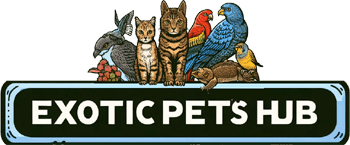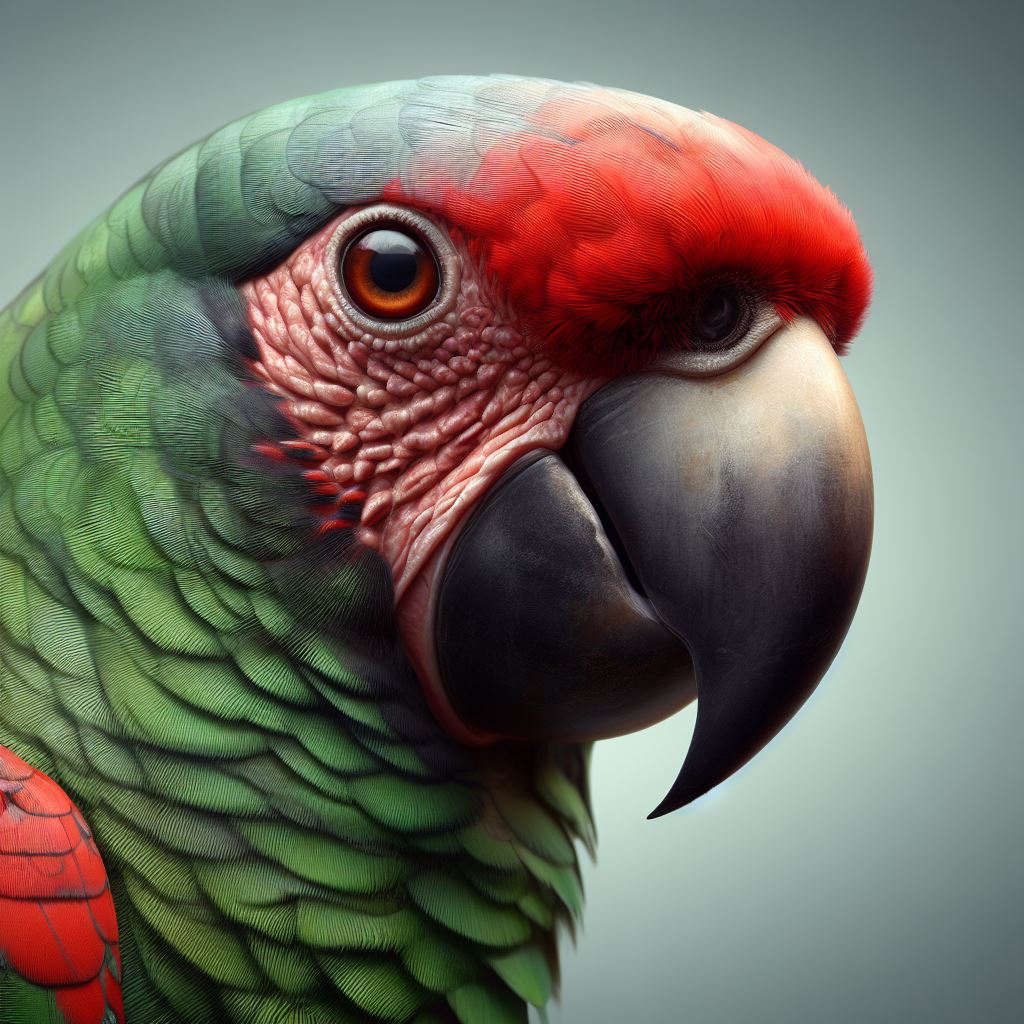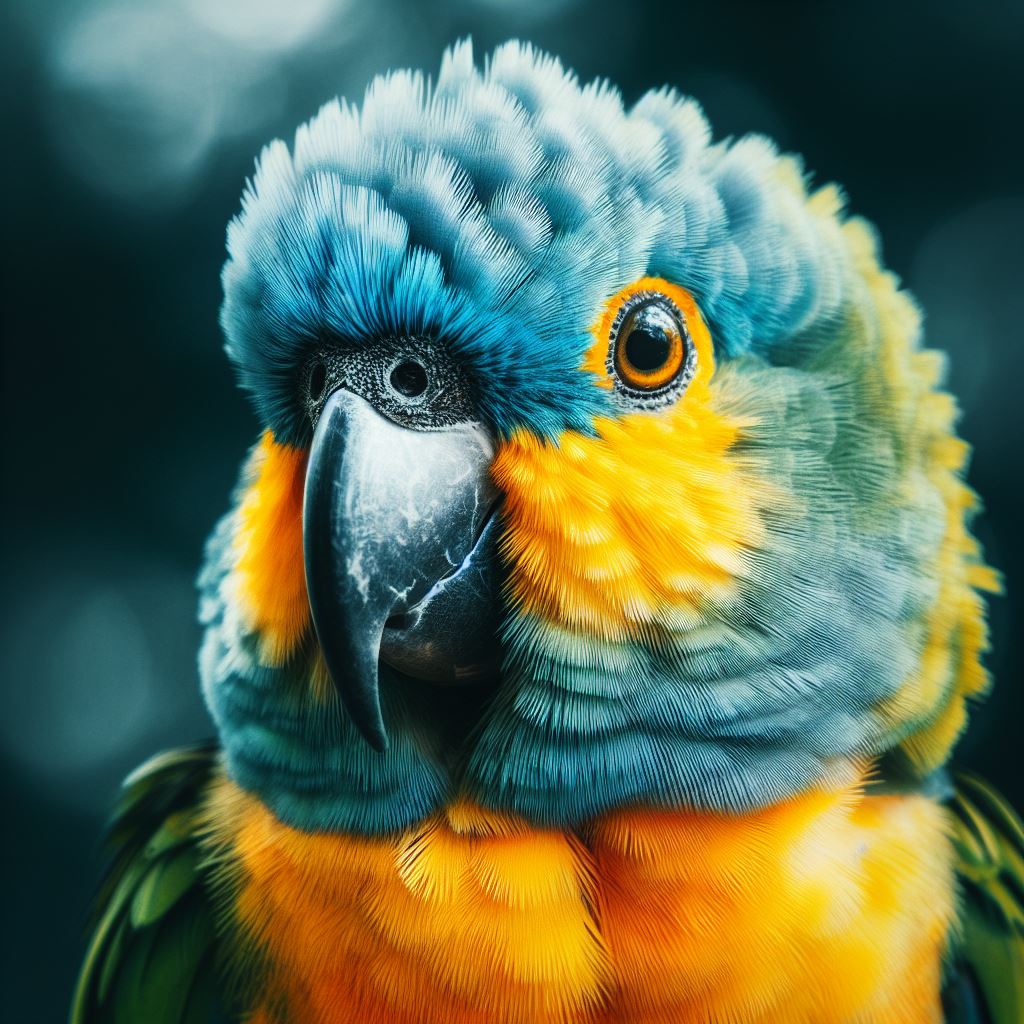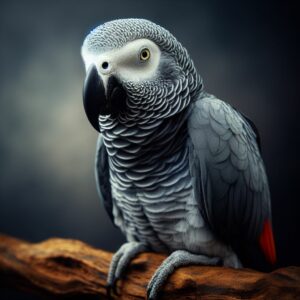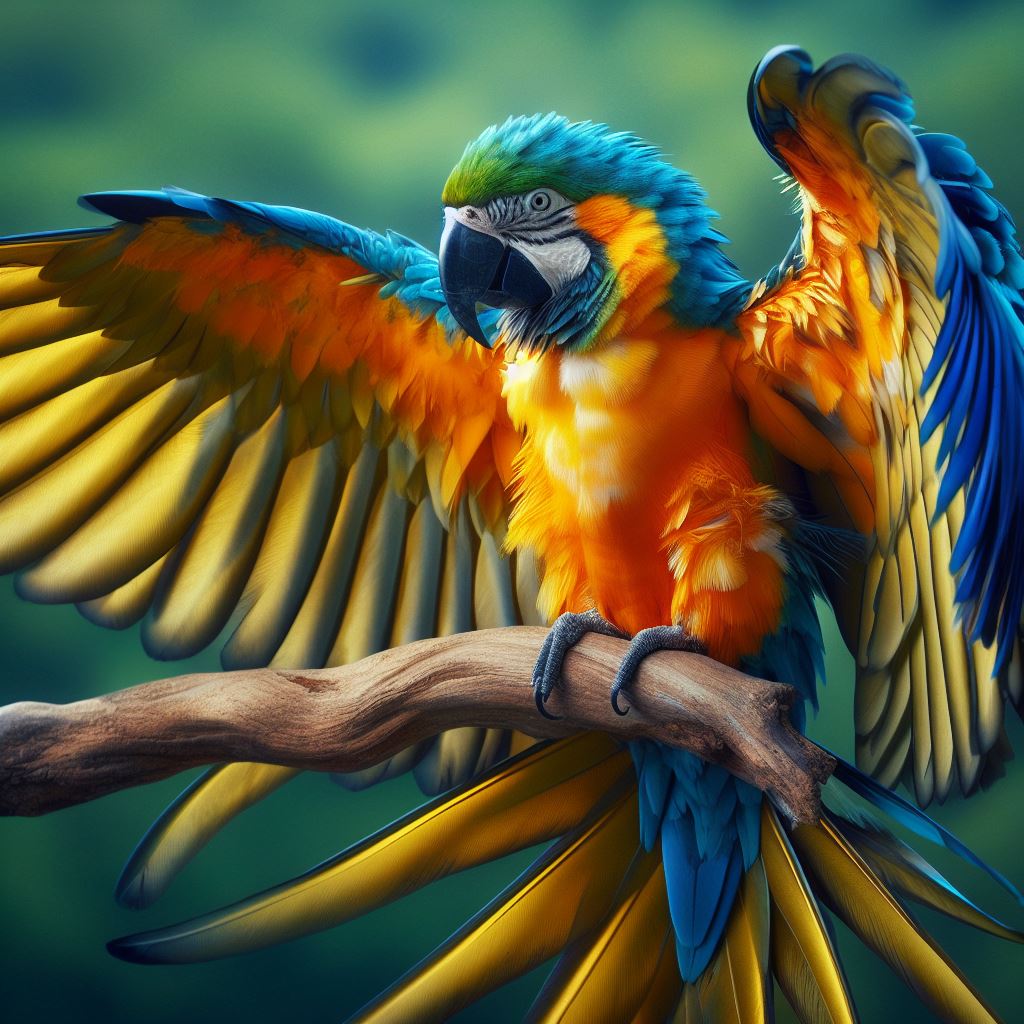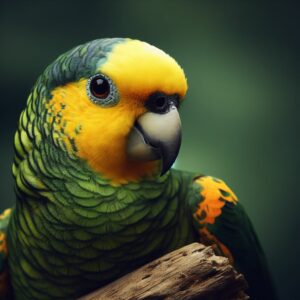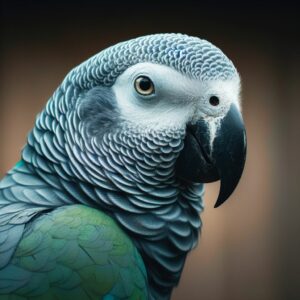Welcome, enthusiasts of the natural world, to the enchanting domain of the Red Lored Amazon Parrots, a realm where resplendent plumage and intriguing behaviors weave a tapestry of life in the heart of the jungle. In this odyssey, we embark on an expedition to unravel the enigmas of these magnificent creatures, delving into the annals of their history, their habitat, and the pivotal role they play within our intricate ecosystem.
Unveiling the Red-Lored Amazon Parrots
The Red Lored Amazon Parrots, steeped in a legacy centuries old, bear witness to the intricate dance of cultures and continents, their significance echoing through the corridors of time.
Let us scrutinize their extraordinary physical traits — from the vivid hues of crimson gracing their plumage to the mellifluous cadence of their vocalizations, each facet narrates a tale as unique as the parrots themselves.
Certainly, parrots are indeed fascinating creatures with a multitude of extraordinary physical traits that set them apart in the avian world. Let’s delve deeper into some of these captivating features:
Vibrant Plumage:
Parrots are renowned for their vibrant and diverse plumage. Their feathers come in a wide array of colors, ranging from brilliant shades of red, blue, green, and yellow to more subtle hues like pastel pinks and purples. The intensity of these colors is often striking, making them some of the most visually appealing birds in the world. These vivid colors not only serve aesthetic purposes but also play important roles in communication and mate selection.
Strong Beaks:
Parrots possess powerful, curved beaks that are well adapted for their omnivorous diet. These beaks are capable of cracking open nuts and seeds, as well as manipulating various types of fruits. The strength of their beaks is also essential for climbing, exploring their surroundings, and building nests.
Zygodactyl Feet:
Parrots have zygodactyl feet, which means they have four toes on each foot, with two toes pointing forward and two pointing backward. This unique foot structure provides them with a strong grip, enabling them to perch securely on branches and manipulate objects with remarkable dexterity. This adaptation is particularly useful for their arboreal lifestyle.
Intelligent Minds:
Parrots are renowned for their high intelligence and problem-solving abilities. They have complex brains and are capable of tasks that require reasoning and understanding. Some parrot species, such as the African Grey Parrot, are known for their exceptional ability to mimic human speech and understand simple sentences, showcasing their cognitive prowess.
Sociable Nature:
Parrots are highly social birds that thrive on interaction with others. They often live in flocks and engage in various social behaviors, including grooming, playing, and even sharing food. Their sociable nature and ability to form strong bonds with humans contribute to their popularity as pets.
Longevity:
Many parrot species have impressive lifespans, with some individuals living for several decades. This longevity is a testament to their resilience and adaptability in various environments.
Melodic Vocalizations:
Parrots are gifted vocal mimics. They can replicate a wide range of sounds, including human speech, other bird calls, and even household noises. This ability to mimic different sounds showcases their remarkable vocal talents and adds to their charm.
In essence, the extraordinary physical traits of parrots, coupled with their intelligence and sociable nature, make them truly remarkable and captivating creatures, each with a unique story to tell.
The Enchanting Habitat of Red-Lored Amazon Parrots
The Red-lored Amazon parrot, scientifically known as Amazona autumnalis, is native to Central America and parts of South America. These enchanting parrots are primarily found in tropical forests, woodlands, mangroves, and palm groves. Let’s explore their captivating habitat in more detail:
Geographical Range:
Red-lored Amazon parrots live in a wide range of habitats, spanning from eastern Mexico (including the Yucatan Peninsula) through Central America (including Belize, Guatemala, Honduras, Nicaragua, Costa Rica, and Panama) and into western Colombia and Ecuador in South America.
Tropical Forests:
These parrots thrive in tropical rainforests, which provide them with abundant food sources, including fruits, nuts, seeds, and flowers. The dense foliage of these forests offers them protection from predators and shelter during adverse weather conditions.
Woodlands and Savannas:
In addition to rainforests, Red-lored Amazon parrots can also be found in woodlands and savannas. These habitats provide a mix of trees and open spaces, allowing the parrots to forage for food and find suitable nesting sites.
Mangroves and Coastal Areas:
Red-lored Amazon parrots are often spotted in mangrove forests and coastal areas. Mangroves provide a unique environment where freshwater and saltwater mix, creating a habitat rich in diverse plant and animal life. These parrots are adapted to this environment, where they can find various food sources.
Nesting Sites:
These parrots typically nest in tree cavities. They choose nesting sites high above the ground to avoid ground-based predators. Their natural habitats offer an array of trees with suitable hollows for nesting, providing a safe environment for raising their chicks.
Human-Modified Habitats:
Red-lored Amazon parrots are known to adapt to human-modified landscapes, including agricultural areas and urban environments. While this adaptability can sometimes lead to conflicts with humans, it also showcases their ability to adjust to changing habitats.
Conservation Status:
Despite their adaptability, Red-lored Amazon parrots face threats from habitat loss due to deforestation, illegal pet trade, and climate change. Conservation efforts are crucial to preserving their enchanting habitats and ensuring the survival of this species in the wild.
The enchanting habitat of Red-lored Amazon parrots reflects the rich biodiversity of the regions they inhabit. These colorful and intelligent birds are an integral part of the ecosystems they reside in, contributing to the beauty and diversity of their natural surroundings.
Red-Lored Amazon Parrots’ Role in the Ecosystem
Red-lored Amazon parrots, like many other parrot species, play vital roles in their ecosystems. Here are several ways in which they contribute to the balance and biodiversity of their habitat:
Seed Dispersal:
Parrots are known for their love of fruits and nuts. When they feed on these items, they often carry seeds away from the parent plant. As they fly and later excrete these seeds, they contribute to seed dispersal. This action helps in the regeneration of forests and maintaining the diversity of plant species. Some seeds can only germinate after passing through a bird’s digestive system, making parrots essential for the growth of certain plant species.
Pollination:
While parrots are not the primary pollinators like bees or butterflies, they do play a minor role in pollination. As they feed on nectar from flowers, their heads and beaks come into contact with the reproductive parts of plants, transferring pollen from one flower to another. This incidental pollination helps in the reproduction of various plant species.
Controlling Insect Populations:
Parrots are omnivorous and often consume insects and larvae. By feeding on insects, they help in controlling insect populations, preventing potential damage to plants and crops. This natural pest control contributes to the overall health of the ecosystem.
Biodiversity Indicator:
The presence and behavior of Red-lored Amazon parrots can serve as indicators of the overall health of their ecosystem. Changes in their population size, behavior, or nesting patterns can provide valuable information about environmental changes, including habitat degradation, climate change, or the presence of pollutants.
Cultural and Economic Value:
Parrots, including the Red-lored Amazon species, hold cultural and economic significance for local communities. They attract eco-tourism, providing revenue for local economies. Additionally, they are an integral part of folklore and cultural practices in many regions, emphasizing the need for their conservation.
Inspiration for Conservation Efforts:
Parrots, with their vibrant colors and intelligence, capture the public’s imagination. They often serve as flagship species for conservation campaigns. By raising awareness about the importance of preserving parrots and their habitats, conservation efforts are extended to protect entire ecosystems, benefiting not only parrots but also various other flora and fauna.
In summary, Red-lored Amazon parrots contribute significantly to their ecosystem by aiding in seed dispersal, minor pollination, insect control, serving as biodiversity indicators, holding cultural and economic value, and inspiring conservation efforts. Their presence and activities are intertwined with the ecological balance of their habitats, making them essential components of the natural world.
Feather Fluffing:
Parrots often fluff their feathers, which can indicate relaxation and contentment. It’s akin to a cat purring when it’s comfortable. However, if a parrot suddenly fluffs up in response to your presence, it might also be a sign of fear or excitement.
Preening:
Preening is a common behavior in parrots where they use their beaks to clean and arrange their feathers. When a parrot preens in your presence, it’s a sign of trust and comfort. However, excessive preening or picking at feathers might indicate stress, boredom, or health issues.
Color Changes:
Some parrots, like Amazons and African Greys, can change the size of their pupils, which can be an indicator of their mood. Dilated pupils might suggest excitement or agitation, while constricted pupils can indicate calmness or interest.
Head Movements:
Parrots use head movements to express curiosity, and playfulness, or to get your attention. Rapid side-to-side movements often indicate excitement, while slow, deliberate movements can signal curiosity or assessment of their surroundings.
Tail Movements:
A relaxed and slowly moving tail often signifies contentment. However, rapid tail fanning or vibrating can indicate excitement or agitation. A tail held high might signify confidence, while a tail tucked between the legs can indicate fear.
Color Displays:
Parrots use their colorful plumage to communicate, especially during courtship. Bright, vibrant colors can indicate excitement, happiness, or trying to attract a mate. Conversely, some parrots might display muted colors when they are feeling unwell or stressed.
Vocalizations:
While not related to colors, parrots’ vocalizations are a crucial part of their communication. Different sounds, tones, and pitches can indicate various emotions, from happiness and contentment to fear or irritation.
Body Posture:
The way a parrot holds its body can convey a lot. A relaxed posture with feathers sleeked down suggests contentment, while an agitated parrot might puff up its feathers to appear larger. A parrot leaning forward might be curious while leaning away can indicate discomfort or fear.
It’s important to note that every parrot is an individual, and their body language can vary. Understanding your specific parrot’s unique behaviors and cues is crucial for effective communication and building a strong bond with your feathered friend. Always pay close attention to their body language, and over time, you’ll become adept at deciphering their various signals and moods.
Red Lored Amazon Parrots’ Culinary Chronicles
Red-lored Amazon parrots, like many other parrot species, have specific dietary needs and preferences that play a crucial role in their overall health and well-being. Their feeding habits can be considered “culinary chronicles” as they indicate their natural behaviors and adaptations. Here’s a look into the dietary preferences and culinary habits of Red-lored Amazon parrots.
Fruit Fanatics:
Red-lored Amazon parrots have a strong affinity for fruits. In their natural habitat, they forage for a variety of fruits, including figs, berries, and tropical fruits like papaya and mango. These fruits provide essential vitamins, minerals, and hydration. The parrots’ vibrant plumage is often a result of the carotenoids found in fruits and vegetables.
Seed Seekers:
While seeds are a part of their diet, they should not be the primary component. In the wild, Red-lored Amazon parrots consume various seeds, including palm nuts and sunflower seeds. However, a diet excessively high in seeds can lead to nutritional imbalances. Properly formulated pellets offer balanced nutrition and are recommended as a staple food.
Insectivorous Instincts:
In the wild, Red-lored Amazon parrots also eat insects, larvae, and small invertebrates. These provide them with protein and other essential nutrients. This insectivorous behavior showcases their adaptability and ability to exploit various food sources.
Challenging Treats:
Parrots are intelligent birds that benefit from mental stimulation. Providing them with challenging treats, such as nuts in shells or puzzle toys that dispense food when manipulated, engages their problem-solving skills and keeps them mentally active.
Culinary Caution:
Some foods that are suitable for humans are toxic to parrots. Avocado, chocolate, caffeine, alcohol, and certain fruits with pits or seeds (like apple seeds) are harmful and should be strictly avoided.
Understanding the culinary preferences and nutritional needs of Red-lored Amazon parrots is essential for their well-being, both in the wild and as pets. Providing a balanced and varied diet, along with mental and physical stimulation, ensures these intelligent and vibrant birds lead healthy and fulfilling lives.
Conservation Endeavors and Hurdles
Conservation endeavors aimed at protecting parrot species, including the Red-lored Amazon, are critical due to the various challenges and hurdles they face in the wild. Here’s an overview of both the conservation efforts and the obstacles in the path of parrot conservation:
Conservation Endeavors:
- Habitat Protection and Restoration: Conservationists work to protect the natural habitats of parrots. This involves creating and maintaining protected areas such as national parks and wildlife reserves. Additionally, efforts struggle to restore degraded habitats, ensuring parrots have suitable places to live, feed, and breed.
- Anti-Poaching Measures: Poaching remains a significant threat to parrots, particularly for the illegal pet trade. Conservation organizations collaborate with law enforcement agencies to combat wildlife trafficking. Strict enforcement of anti-poaching laws and penalties for illegal trade are crucial in deterring poachers.
- Community Engagement and Education: Educating local communities about the importance of parrots and their habitats is vital. Conservationists engage with communities to raise awareness about the ecological significance of parrots, their role in biodiversity, and the economic benefits of ecotourism.
- Research and Monitoring: Scientific research helps conservationists understand parrot populations, their behaviors, and their ecological needs. Regular monitoring of parrot populations provides valuable data for conservation planning and helps assess the effectiveness of conservation efforts.
- Breeding and Release Programs: Conservation organizations sometimes establish captive breeding programs for endangered parrot species. These programs aim to reintroduce captive-bred parrots into their natural habitats, boosting wild populations. However, such programs need to be carefully managed to ensure genetic diversity and adaptation to the wild environment.
Hurdles and Challenges:
- Habitat Loss and Fragmentation: Deforestation, often due to agricultural expansion and logging, leads to habitat loss and fragmentation. This limits the available space and resources for parrots, making it difficult for them to find suitable nesting sites and food.
- Illegal Pet Trade: Parrots are highly sought after as pets due to their intelligence and vibrant plumage. The illegal pet trade continues to be a significant threat, leading to population declines in the wild. Smuggling networks often operate across international borders, making law enforcement challenging.
- Climate Change: Climate change affects parrots and their habitats. Altered weather patterns, extreme weather events, and shifts in food availability impact parrot populations. Climate change can also facilitate the spread of diseases, posing additional risks to parrot communities.
- Invasive Species: Invasive species, such as non-native predators and competitors, threaten parrot nests and food sources. Invasive species often outcompete native species, leading to declines in parrot populations.
- Lack of Resources: Conservation efforts require funding, skilled personnel, and community support. Limited resources can hinder the implementation of necessary conservation strategies, making it challenging to address all the issues parrots face effectively.
Efforts to conserve parrots require a combination of legal measures, community involvement, international collaboration, and sustainable practices. By addressing these challenges and working collectively, there is hope for the conservation and preservation of these magnificent birds for future generations.
Red Lored Amazon Parrots as Companions: Considerations and Commitments
Adopting a Red-lored Amazon parrot as a companion is a significant decision that comes with various considerations and commitments. These intelligent and social birds require dedicated care and attention to ensure their well-being and happiness. Here are some essential factors to keep in mind before bringing a Red-lored Amazon parrot into your home:
- Lifelong Commitment: Amazon parrots, including the Red-lored Amazon, have long lifespans, often exceeding 40 years in captivity. Bringing one into your home means committing to caring for it throughout its entire life. Be prepared for a long-term relationship that requires time, effort, and emotional investment.
- Social Nature: Red-lored Amazon parrots are highly social birds and need regular interaction with their human caregivers. They thrive on socialization and can develop behavioral issues if left alone for extended periods. You’ll need to spend quality time with your parrot daily to maintain a strong bond and prevent boredom.
- Intellectual Stimulation: These parrots are incredibly intelligent and need mental stimulation to stay engaged. Providing toys, puzzles, and interactive activities will keep them mentally active and prevent boredom-related behaviors. Regular training sessions can also be beneficial.
- Dietary Needs: A balanced and varied diet is crucial for the health of your Red-lored Amazon parrot. Offer a mix of high-quality pellets, fresh fruits, vegetables, and nuts. Avoid feeding them foods that are toxic to birds, such as avocados, chocolate, caffeine, and alcohol.
- Enclosure and Environment: Provide a spacious and safe enclosure with ample room for your parrot to move, stretch its wings, and play. Regular out-of-cage time in a bird-proofed area of your home is essential for their physical and mental well-being.
- Vocalizations: Amazon parrots, including Red-lored Amazons, are known for their loud vocalizations. Get ready for squawking, talking, and various other vocal sounds. If you live in an apartment or close quarters, consider the noise level as it might disturb neighbors.
- Veterinary Care: Regular veterinary check-ups are vital to monitor your parrot’s health. Find an avian veterinarian experienced in treating parrots. Be prepared for potential medical expenses, as avian care can be specialized and may require additional financial commitment.
Conclusion: Unveiling the Parrot Tapestry: Key Revelations
In unraveling the intricate threads of the parrot tapestry, several key revelations emerge, painting a vivid portrait of these remarkable birds. The parrot tapestry shows vibrant hues, diverse behaviors, and complex ecological roles. Here are the key revelations that unveil the parrot tapestry
We recognize the delicate balance between human fascination and the responsibility to protect and preserve these extraordinary creatures. As stewards of the natural world, we must safeguard the parrot tapestry, ensuring that future generations can marvel at the beauty and complexity of these avian wonders.
